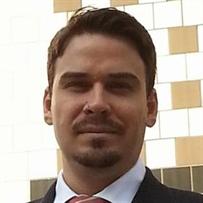Expert Opinion: Hasan Ayaz on the emerging field of Neuroergonomics
On January 15, 2009, US Airways Flight 1549 was on its way to Charlotte Douglas International Airport in Charlotte, North Carolina from LaGuardia Airport in New York City with 155 passengers on board. After 3 minutes into the flight, the plane struck a flock of geese causing both jet engines to quickly lose power. Now, for a moment imagine yourself in the pilot’s seat operating that Airbus A320. It is very likely that you will experience cognitive overload. Should you think about how to control the plane without engines, or think about where to land? Should you pay attention to how to manage the crew or comfort the passengers whose lives are at stake? What about determining if you have enough fuel to land at the nearest airport or monitoring how fast you are losing altitude in the meantime? This situation is one where not many could have functioned as well as the captain Chelsey Sullenberger who became known for the "Miracle on the Hudson" landing on that day.
 This may be an extreme example but human and machine systems are at the center of vital procedures where often lives are at stake. Whether it is a pilot controlling an aircraft, or a surgeon in operating room, common theme is the human operator utilizing the machine to perform a task.
This may be an extreme example but human and machine systems are at the center of vital procedures where often lives are at stake. Whether it is a pilot controlling an aircraft, or a surgeon in operating room, common theme is the human operator utilizing the machine to perform a task.
The efficiency and safety of many human-machine systems are critically dependent on the cognitive workload and situational awareness of the human operators of such systems. Unfortunately, many human-machine interfaces expose users to extremes of workload (too high or too low) and can degrade the operator’s awareness of the environment and of system functioning. An ideal human-machine system would be informed and updated about the current cognitive workload level of its personnel and/or designed to keep the necessary workload at an optimum level. Hence, it can help prevent potential overload and minimize errors. Importantly, behavioral measures alone may not be sufficiently sensitive to index overload, because operators may extend extra effort in the form of “brain work” to maintain system performance, but this additional effort could come at a cost that is reflected only in neural measures. If excessive brain overload is not detected, performance may eventually degrade, potentially with catastrophic consequences.
Significant progress has been made over the last decade in understanding the neural bases of cognitive processes and behavior. The advent of new and improved brain imaging tools, that allow monitoring brain activity in the field and operational environments, are expected to allow better identification of neurophysiological markers that can index impending overload or fatigue before performance measures can. Use of such portable and wearable neuroimaging technologies to real time settings could help assess cognitive and motivational states of human operators and close the loop for advanced human-machine interaction.
Neuroergonomics is the emerging field of studying the brain and behavior at work, as Prof. Raja Parasuraman summarized it. Neuroergonomics is the application of tools and knowledge of neurosciences to ergonomics. And here, the application of brain imaging in real-world scenarios becomes more relevant. And, the augmentation of human performance and its transfer to improved functioning at work or in everyday settings via alteration of underlying neurocognitive processes is a prime goal of Neuroergonomics.
As the machines around as getting ever complicated and advanced, the need for Neuroergonomics approaches are emerging from their design phase to daily use scenarios. To this end, the inaugural international Neuroergonomics Conference will be held in Paris, October 6&7, 2016. Conference is organized by Prof. Frederic Dehais (ISAE) and Prof. Hasan Ayaz (Drexel) and will be dedicated to Prof. Raja Parasuraman who unexpectedly passed on March 22nd 2015. Prof. Parasuraman’s pioneering work led the emergence of Neuroergonomics as a new scientific field. He made significant contributions to a number of disciplines, from human factors to cognitive neuroscience. And, the conference will bring together key researchers from the world to remember his contributions, discuss latest trends and to define the future of this exciting interdisciplinary field.
Further reading
Parasuraman, R., & Rizzo, M. (2007). Neuroergonomics: The brain at work . New York, NY USA: Oxford University Press, New York, NY USA.
Parasuraman, R., Christensen, J., & Grafton, S. (2012). Neuroergonomics: The brain in action and at work. Neuroimage, 59(1), 1-3.
Ayaz, H., Onaral, B., Izzetoglu, K., Shewokis, P. A., McKendrick, R., & Parasuraman, R. (2013). Continuous monitoring of brain dynamics with functional near infrared spectroscopy as a tool for neuroergonomic research: Empirical examples and a technological development. Frontiers in Human Neuroscience, 7, 1-13.
McKendrick, R., Parasuraman, R., & Ayaz, H. (2015). Wearable functional Near Infrared Spectroscopy (fNIRS) and transcranial Direct Current Stimulation (tDCS): Expanding Vistas for Neurocognitive Augmentation. Frontiers in Systems Neuroscience, 9(27). doi:10.3389/fnsys.2015.00027
